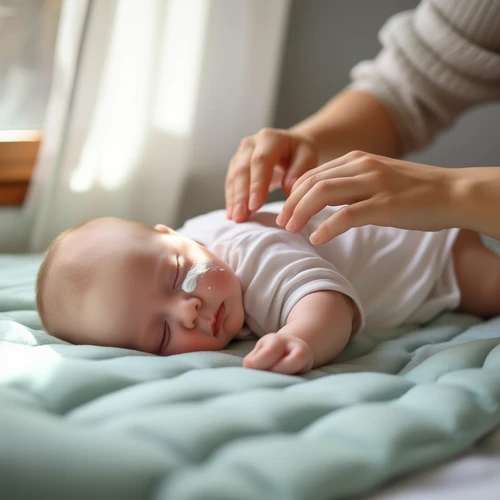Baby eczema, commonly referred to as atopic dermatitis, is a frequent skin complaint that surfaces in many infants during their first year. It manifests as dry, itchy patches that can appear on the cheeks, forehead, arms, or behind the knees.
Why it Happens
While the root cause remains complex, two principal factors play a role: a fragile skin barrier and a sensitive immune system. Genetic predispositions such as a family history of allergies or asthma elevate the risk.
Environmental Triggers can ignite flare‑ups. Dry winter air, harsh soaps, wool clothing, and even certain foods introduced during breastfeeding or complementary feeding can aggravate inflammation.
Early Detection Matters
Notice the first signs—a red, scaly rash that becomes worse at night, frequent scratching, or sleep disruptions. Spotting eczema early enables prompt care and reduces the chance of secondary infections.
Parents should assess whether the rash is isolated or accompanied by fever, pus, or a general feeling of illness. In such cases, a pediatrician should be consulted for potential antibiotics or steroid guidance.
Basic Care Routine
1. Gentle Cleansing: Use lukewarm water and fragrance‑free baby wash. Keep shower times short—no more than 5 minutes—to prevent skin drying.
2. Moisturize Immediately: Apply a thick, occlusive cream (like petroleum jelly or prescription barrier creams) within three minutes of bath to seal in moisture.
3. Dress Appropriately: Opt for soft, breathable cotton fabrics. Avoid synthetic fibers and tight clothing that can rub irritated skin.
4. Keep It Cool: Temperature spikes can intensify itching. Use cool compresses or a fan to keep the baby comfortable without causing drafts.
5. Manage Scratching: Trim the baby’s nails, or if the infant is older, use mittens or sock caps during sleep to prevent skin damage.
When to Seek Medical Advice
If eczema doesn’t improve within two weeks of home care, spreads, or shows signs of infection (redness, oozing, fever), a pediatric dermatologist or allergist should be consulted. They may recommend topical steroids, calcineurin inhibitors, or biologic therapies for stubborn cases.
Remember, every baby is unique. What works for one may not for another, so a personalized plan—often developed alongside medical professionals—yields the best outcomes. Patience, consistent care, and a calm environment help your little one achieve clear, healthy skin.


